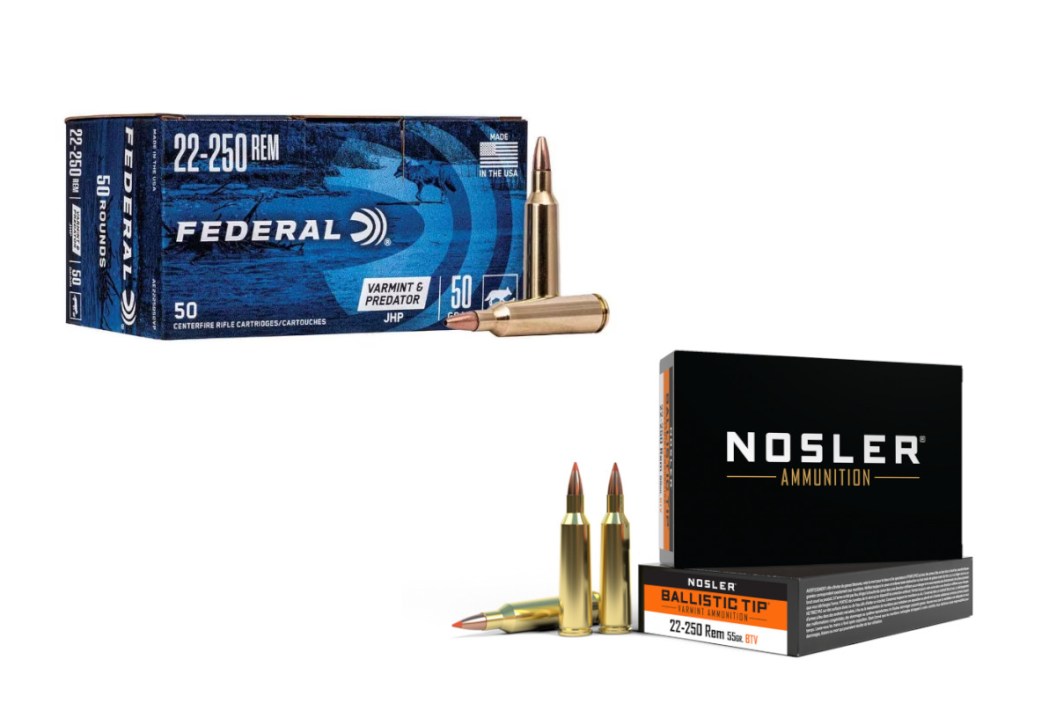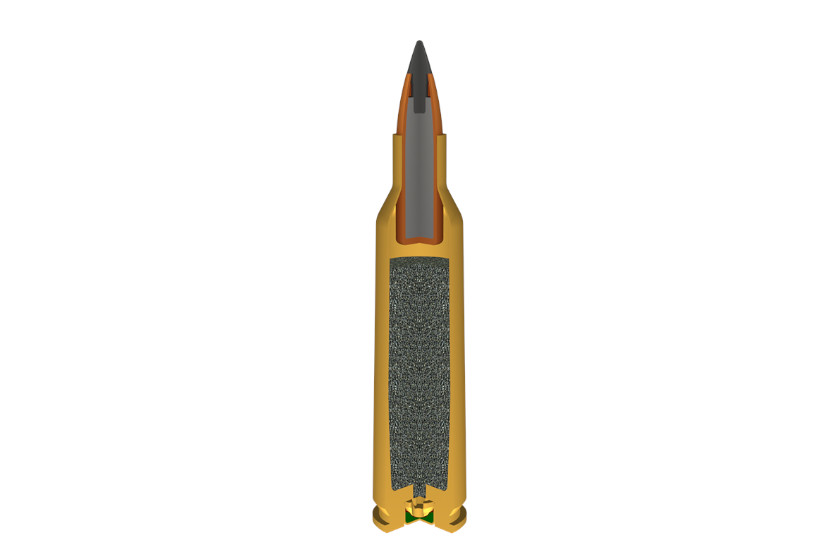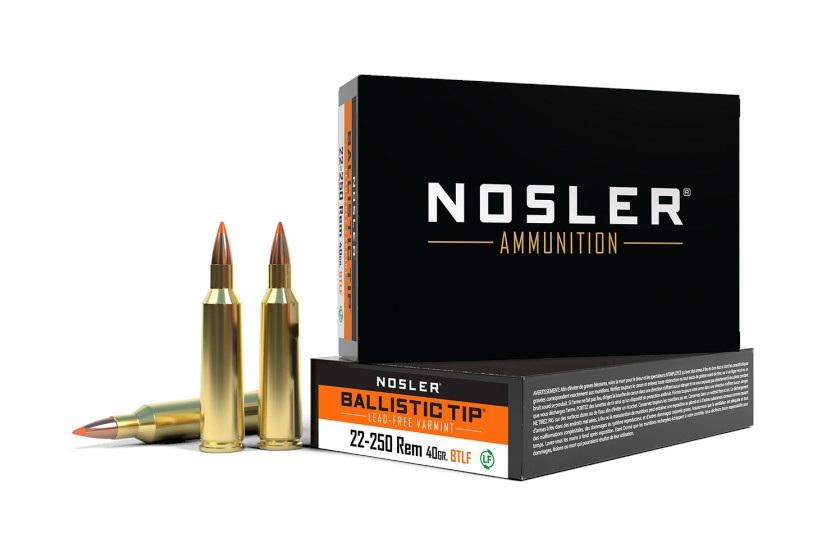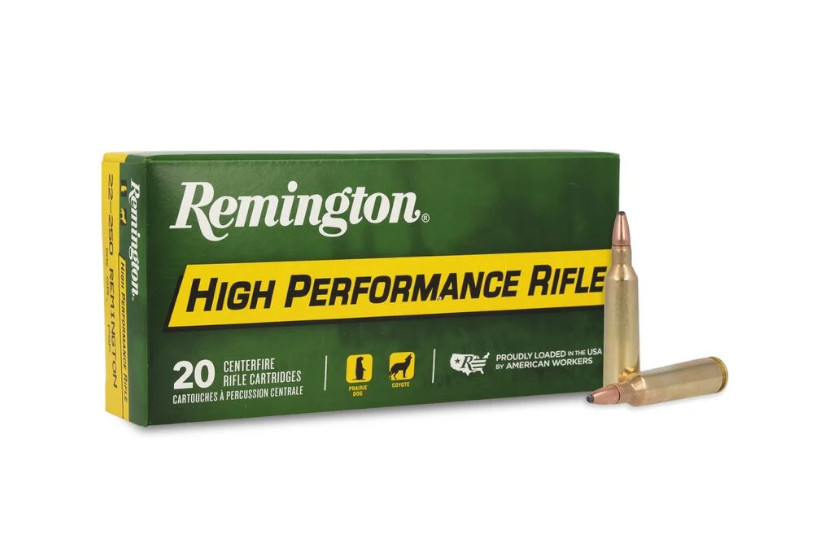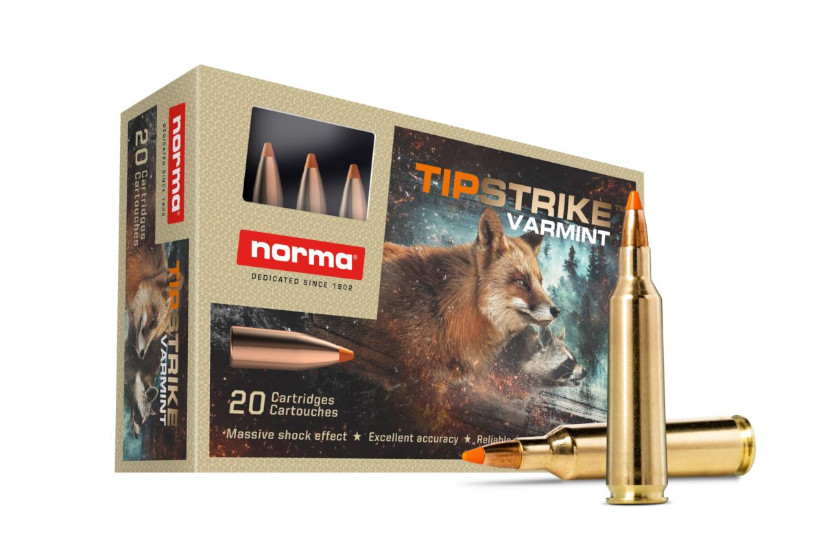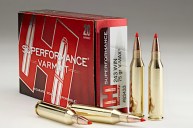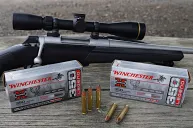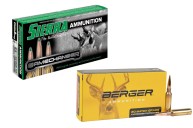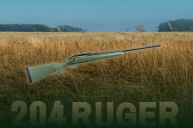In a world of increasingly fast rifle rounds, the 22-250 Remington still manages to stand out from the crowd. That's mostly because it is not uncommon to find factory rounds that are doing a blistering 4,000 fps at the muzzle. The 22-250 is a screamer that carries that speed downrange. It is not unheard of for it to still be doing 3,000-plus fps out to 200 yards and beyond. For varmints, this round is their worst nightmare, one they will never see or hear coming.
We have already talked extensively about the round's capabilities and some of the best rifles on the market for it. Today we will take a closer look at comparisons to the .223 Remington. And we will also give recommendations for some of our top picks of factory rifle ammunition for this drag racer of the shooting world.
What is the Difference Between 22-250 and .223?
It is inevitable that these two centerfire rounds get compared so often. Both are firing a .224-inch (5.7 mm) bullet. Even the neck diameter of the casings is nearly identical. However, that is about where you can stop drawing comparisons. The biggest difference here is the case length. The .223 Remington is 1.76 inches, while the 22-250 Remington is 1.912 inches. That little bit of extra space allows more powder and translates into an increased muzzle velocity of approximately 200 to 300 fps depending on the bullet weight.
Obviously, this also translates to the 22-250 carrying much more energy and stopping power down range. It is usually somewhere in the range of 200 foot-pounds more energy from the 22-250 as opposed to the .223. This gives the 22-250 a few pounds more kick than the .223, but it's such a small amount that most shooters likely won't even notice it.
It is also an extremely flat-shooting round. It is not unusual for many manufacturers to put their factory ammo at zero drop at 200 yards. Many have less than 5 inches of drop at 300. Normally, you will need to stretch the range to 400 yards before you start seeing around 15 inches of drop.
As you may have already guessed, there is a downside to all that speed, power, and accuracy. The 22-250 is an extremely hot round, especially if you're shooting high-grade competition rounds built for long range. Every gun is going to vary depending on the type of ammo you shoot. However, we have heard of shooters burning out the barrels of their brand-new 22-250 with as few as 1,000 to 1,200 rounds.
The other major downside is availability. The round first went mainstream in 1963, but it seems to have only really taken off in the last decade as more shooters feel a need for speed. Still, many ammo manufacturers seem to not be putting the 22-250 as high on the priority list as the .223, which is available practically everywhere. Depending on where you live, it can sometimes be a real challenge to find it in stock. That is why some hunters have taken to reloading their own. It can also come with a rather high price tag. That said, here are our top picks of factory rifle ammo for the 22-250 currently on the market today.
1. For Hunters Who Want Pure Speed
Hornady Superformance Varmint
Pros:
- Ridiculous speeds
- Two bullet weights and types
Cons:
- Rough on barrel life.
- Can be tough to find.
We will just start off this list with the speed demon of factory 22-250 Remington ammo. Hornady manufactures a 35-grain version with a copper alloy core NTX bullet with a polymer tip, and a 50-grain version using their V-Max lead core bullets. Either way, the speeds are outstanding with both rounds. You are looking at 4,450 fps of muzzle velocity and 1,539 foot-pounds of muzzle energy from the 35-grain version. Those NTX bullets are still doing 2,046 fps at 400 yards. Hornady has the trajectory at zero for 200 yards and only -4.2 for 300. The nice thing about the smaller version is that it is lead-free if you want to hunt coyotes on public lands. The 50-grain Hornady V-Max is a little slower, but it is still doing 4,000 fps and 1,776 foot-pounds of energy at the muzzle. Again, there is zero drop at 200 yards where the rounds are still doing 3,086 fps and hitting with 1,057 foot-pounds of energy. If you need to take out prairie dogs, groundhogs, or coyotes at a distance, these are the rounds to do it with. The downside is that these two are going to be extremely rough on the barrel. We would recommend practicing with slower rounds and saving these for hunting or competition scenarios.
2. The Most Affordable Hollow Points
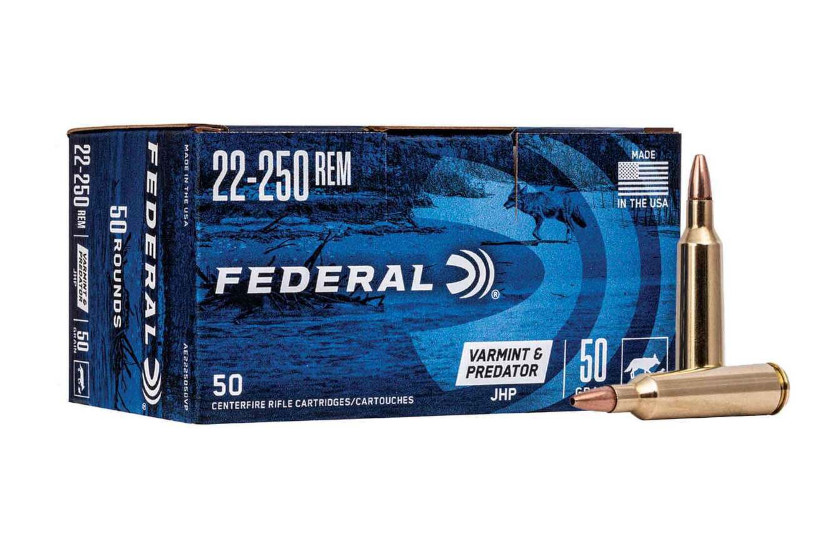
Sportsman's Warehouse
Federal American Eagle Varmint and Predator
Pros:
- Affordable
- 50-round boxes
Cons:
- Only one bullet weight available
From a budget perspective, Federal Premium has a great option here in their Varmint and Predator line. These 50-grain jacketed hollow points expand nicely and dole out some incredible damage on coyotes and prairie dogs. These rounds are doing 3,850 fps at the muzzle and deliver about 1,645 foot-pounds of muzzle energy. These JHPs are still doing 3,300 fps at 100 yards and just over 2,800 fps at 200 yards. They are hitting with 882 foot-pounds of energy at that 200-yard mark. These rounds are great for hunters who want simplicity and affordability. Federal Premium sells them in both 20- and 50-round boxes for a little more added value. We wish a few more bullet weights were available, but the $75 price tag for 50 rounds makes this one of the more affordable options out there.
3. The Best Ballistic Tip Ammo
Nosler Ballistic Tip Varmint Ammunition
Pros:
- Three bullet weights
- Nosler includes a lead-free option.
- Blazing speeds
Cons:
- Expensive
If you are looking to squeeze every ounce of energy and speed out of the 22-250 Remington, it is hard to go wrong with Nosler. The company loads these rounds with their boat-tail Spitzer ballistic tip bullets. The 35- and 40-grain versions are lead-free and suitable for hunting on public land. The 35-grain version is doing 4,200 fps at the muzzle and hitting with 1,370 foot-pounds of energy. At 200 yards, it is still doing 3,073 fps, although it does lose significant energy by then at 734 foot-pounds of energy. The 40-grain versions have a muzzle velocity of 3,950 fps and hit with 1,386 foot-pounds of energy. At 300 yards, they are doing 2,527 fps and 567 foot-pounds of energy. As you might expect, the lead core 55-grain version retains energy a little better at a distance. That variant is doing 3,550 fps at the muzzle and hits with 1,538 foot-pounds of energy. At 300 yards, the lead core bullets are a little slower at 2,455 fps. However, they hit with 736 foot-pounds of energy at that distance. The biggest downside to these rounds is the price. You are looking at over $50, or around $2.50 a round. These are probably best saved for competition or hunting trips rather than casual shooting at the range.
4. Our Favorite Option Inside 100 Yards
Winchester Varmint X
Pros:
- Easier on barrels
- Affordable
Cons:
- Some users have complained about reliability.
While the 22-250 is often associated with long-range hunting for coyotes and other varmints, there is nothing wrong with limiting your shots inside 100 yards. At that distance, the Winchester Varmint X is our top pick. These polymer-tipped lead core bullets feature an alloy jacket for optimal expansion and clean kills on most varmints. At 100 yards, these rounds are doing 3,253 fps and are hitting with 1,292 foot-pounds of energy—more than adequate for most coyote hunting scenarios. Winchester has these rounds at zero drop at that distance. You can extend these out to 200 yards quite easily, too, since the trajectory is -1.8 at that range. We have heard some users have experienced reliability issues with these rounds; however, at $34 a box, these are a great option. These rounds are going a little slower among those on this list, so they will also contribute to less barrel wear.
5. A Lower-Velocity Soft Point Option
Remington High Performance Rifle
Pros:
- Slower and easier on barrels
- Simple soft point bullets
Cons:
- Extremely difficult to find in some areas.
There are not a lot of simple soft point bullet options on the market in 22-250 Rem, simply because most hunters who buy this caliber are looking for pure speed. However, there is a lot to like in these 55-grain soft point rounds from Remington. At 3,680 fps at the muzzle, they are slower, but that is also going to help extend your barrel life. These rounds are still doing over 3,100 fps at 100 yards and 2,220 fps at 300, so the simple design isn't hampering the speed too much. Expect just over 1,200 foot-pounds of energy at 100 yards, and around 600 at 300 yards. That's more than enough to still drop any coyote dead in their tracks. These rounds are mid-priced at about $40 a box. The only real problem with these is that soft points are not nearly as popular as the polymer ballistic tip or jacketed hollow point options on the market. Finding these on store shelves can be a bit of a challenge. Some shooters may find it easier to just buy online.
6. A Lower-Velocity Polymer Tip Option
Norma TipStrike Varmint
Pros:
- Polymer tip that is better on barrel life
- Excellent expansion and wound channels
- Affordable
Cons:
- Reduced range
Just because the 22-250 can do 4,000-plus feet per second doesn't mean everyone wants it to go quite that fast. This 55-grain weight polymer-tipped option from Norma keeps the muzzle velocity at 3,576 fps with 1,562 foot-pounds of energy. These rounds are going to be better on barrel life than some of the other options we have recommended on this list. That loss in speed does come with a little more drop than some of the other polymer-tipped bullets on the market today. Norma says to expect -5.6 inches of drop at 300 yards where the rounds are traveling around 2,391 fps. However, for around $40 a box, these are quite affordable. We saw Norma selling them direct for as little as $36 a box, which is a solid deal for 22-250 ammo.
For more outdoor content from Travis Smola, be sure to follow him on Twitter and Instagram. For original videos, check out his Geocaching and Outdoors with Travis YouTube channels.
READ MORE: 22-250 REMINGTON: 8 RIFLES CHAMBERED FOR THE VARMINT ROUND CAPABLE OF 4,000 FPS
